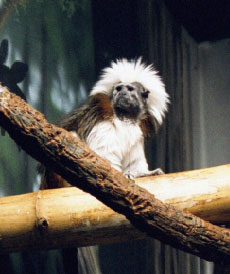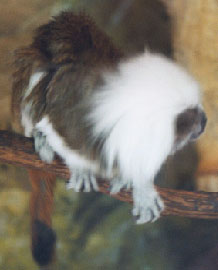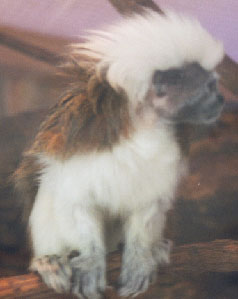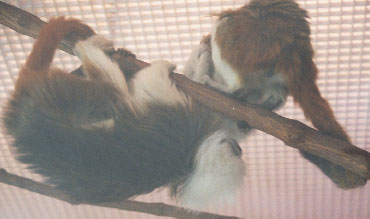REFERENCES:
Epple, G. and Lorenz, R. 1967. Vorkommen, Morphologie und Funktion der Sternaldruse bei den Platyrrhini. Folia Primatologica. Vol.7, 98-126.
Epple, G., Belcher, A.M., Kuderling, I., Zeller, U., Scolnick, L., Greenfield, K.L., Smith III, A.B. 1993. Making Sense Out of Scents: Species Differences in Scent Glands, Scent-marking Behaviour, and Scent-mark Composition in the Callitrichdae. in Marmosets and Tamarins: Systematics, Behaviour, and Ecology. ed. Anthony B. Rylands, Oxford University Press.
Fleagle, John G. 1988. Primate Adaptation and Evolution. Academic Press.
French, J.A., Abbott, D.H., and Snowdon, C.T. 1984. The Effect of Social Environment on Estrogen Secretion, Scent Msrking, and Socio-sexual Behavior in Tamarins (Saguinus oedipus). American Journal of Primatology. Vol. 6, 155-167.
Hershkovitz, P. 1977. Living New World Monkeys, Part 1. (Platyrrhini), with an Introduction to Primates. Chicago University Press, Chicago.
Kinzey, W.G. 1997. Saguinus. in New World Primates: Ecology, Evolution, and Behavior. ed. Warren G. Kinzey, Aldine de Gruyter, New York.
McGrew, W.C. 1997. Sex Differences in the Family Life of Cotton-top Tamarins: Socioecological Validity in the Laboratory. in New World Primates: Ecology, Evolution, and Behavior. ed. Warren G. Kinzey, Aldine de Gruyter, New York.
Savage, A., Ziegler, T.E., and Snowdon, C.T. 1988. Socio-sexual Development, Pair Bond Formation, and Mechanisms of Fertility Suppression in Female Cotton-top Tamarins (Saguinus oedipus oedipus). American Journal of Primatology. Vol. 14, 345-349.
Snowdon, C.T. and Soini, P. 1988. The Tamarins, Genus Saguinus. in Ecology and Behavior of Neotropical Primates, Vol. 2 PP. 223-298. Eds, R.A. Mittermeier, A.B. Rylands, A.F. Coimbra-Filho, and G.A.B. da Fonseca. Washington, DC: World Wildlife Fund. |
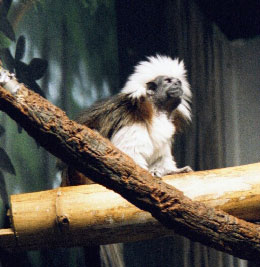
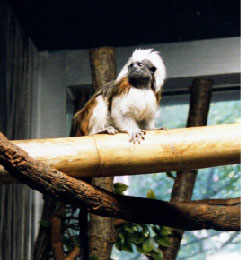 |
